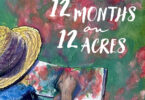
Hollywood. It’s magic. It’s synchronicity. It’s filthy It’s my home, and this is where
I write, not far from the Red Carpet events and the growing population of tent cities. I just turned forty three, and I moved here 10 years ago from Rhode Island with a few careers under my belt. I have been an accounting manager, an English teacher, and now, a writer. I began writing as a way to heal from the trauma of being brought up in a religious cult. Now I write because the written word is what makes my heart sing and what drives me. Plays about Celtic goddesses, poetry blending the whimsy of art and astrology, feature films that tickle my funny bone, and at present, I’m in the process of getting a semi-autobiographical short film about my childhood experiences from the page to the screen. That’s the magic, but it isn’t all glitz and glamour.
Writing a screenplay and seeing it on the big screen are many long steps apart. First, the idea rushes in, and fingers fly across the keyboard (or slog, depending on the day and the presence or absence of the Muse). Once drafted, the screenplay is shared with others who will read it and offer notes. Based on these notes, the draft is rewritten. The script goes under the knife repeatedly as kind readers offer criticism and encouragement. A reading is scheduled after several rounds of rewrites are completed, and a group of actors gathers to read aloud from the script and to offer their opinions at the end.
Once the script is finalized, a budget is made and funding is considered –often the most daunting part of the project. A lucky few have the funds on hand and can begin production once the crew, actors, and producers are chosen. The rest launch crowdfunding campaigns, using sites such as Kickstarter or IndieGoGo, or find investors. Investors are usually interested in very specific types of projects, and only after talent with name recognition has been acquired.
The day production begins, lights, camera, sound, makeup, other crew members, and actors crowd onto the set to bring the words to life. The number of scenes and locations will dictate how many days are spent filming.
After the final, “Cut!” has been called by the director, the film is edited and colored at a post production studio. Audio, recorded separately from video, will be “married” to the images. At this point, the film can travel many different paths. It may be submitted to film festivals. It may have a theatrical release. It may be uploaded and shared on the internet.
There are numerous ways for a screenwriter to find their way in Hollywood, but it all begins with some version of “Once Upon A Time.”





Leave a Comment